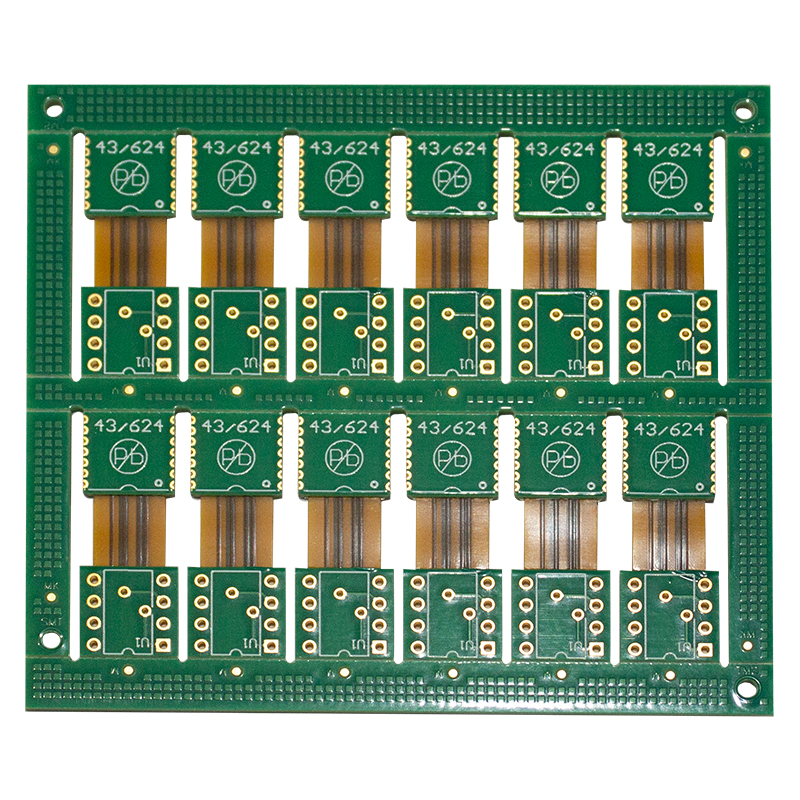Let’s delve deeper into the world ofrigid-flex boards.
In the ever-evolving field of electronics manufacturing, innovative technologies are emerging, driving the development of more advanced and sophisticated equipment. Rigid-flex PCB technology is such an innovation that has received widespread attention in recent years. This comprehensive guide aims to demystify the rigid-flex PCB concept and explain its characteristics, benefits, applications, manufacturing processes and potential future developments.
Understanding Rigid-Flex PCBs
Rigid-flex boards, also known as flexible circuit boards or rigid-flex boards, combine the properties of rigid printed circuit boards (PCBs) and flexible circuits into a single unit. It combines the advantages of rigid and flexible substrates, enabling complex designs and three-dimensional configurations that are impossible with traditional rigid PCBs. This unique structure consists of multiple layers of flexible circuit material encapsulated between rigid layers. The result is a high-performance, lightweight and durable solution that can withstand complex mechanical stresses, extreme temperatures and vibrations.
Main features and advantages of rigid-flex boards
Rigid-flex PCBs offer many advantages over traditional PCB designs. First, their flexibility allows seamless integration into irregularly shaped devices, reducing space constraints and increasing overall product reliability. They provide significant space savings, allowing engineers to design compact, lightweight electronics. Additionally, eliminating connectors and bulky wiring simplifies the assembly process and reduces the risk of potential failure points.
Rigid-flex PCBs also exhibit excellent resistance to environmental factors such as moisture, chemicals, and temperature changes. Their ability to withstand harsh conditions makes them ideal for applications in demanding industries such as aerospace, medical devices and automotive electronics. In addition, their high reliability and durability help improve performance, reduce maintenance costs and extend product life cycles.
Application of rigid-flex board
Rigid-flex PCBs are used in numerous industries because of their versatility and adaptability. In the aerospace sector, they are used in avionics systems, satellites and drones, where compactness, lightweight design and resistance to extreme conditions are crucial. In the medical industry, they are used in medical devices, implantable electronics, and biometric sensors, contributing to the advancement of healthcare technology. Rigid-flex PCBs are also widely used in consumer electronics, especially smartphones, wearables and tablets, where space optimization and reliability are crucial.
In the automotive field, rigid-flex PCBs play an important role in advanced driver assistance systems (ADAS), infotainment systems, and electronic control units (ECUs). Their ability to withstand vibration and temperature fluctuations makes them ideal for automotive applications, ensuring reliable performance of critical systems. In addition, industrial equipment, including robotics, machinery, and power distribution systems, benefit from the flexibility of rigid-flex PCBs to operate efficiently and reliably even in challenging environments.
Rigid-flex board manufacturing process
Manufacturing rigid-flex PCBs involves a series of critical processes to ensure the final product meets the required specifications. These processes typically include design and layout, material selection, drilling, plating, imaging, lamination, etching, solder mask application, testing and final inspection.
The design and layout phase focuses on creating an optimized circuit layout that takes into account the mechanical and electrical requirements of the intended application. Material selection is critical as the choice of substrate and adhesive affects the overall flexibility, stability and durability of the final product. Drilling and plating are important steps involved in creating the necessary vias and conductive paths.
During the imaging process, a layer of photoresist is applied and selectively exposed, creating a defined circuit pattern. Next comes lamination, where layers of flexible circuit material and rigid boards are bonded together using heat and pressure. Etching removes unnecessary copper to form the required circuit traces, while solder mask is applied to protect the exposed copper and add insulation.
Testing and final inspection ensure that the manufactured rigid-flex boards meet the required quality standards. Various testing methods are used including electrical testing, visual inspection and thermal cycling to ensure functionality and reliability.
Rigid-flex board Future development
The field of rigid-flex PCBs is expected to make significant progress in the coming years. Emerging technologies such as 5G, Internet of Things (IoT) and wearable devices will continue to drive demand for flexible electronics. Research and development efforts focus on improving manufacturing processes, reducing costs and improving the performance of rigid-flex PCBs. This will enable more complex and flexible designs, opening the door to novel applications and possibilities.
In summary
Rigid-flex PCB technology offers a unique combination of flexibility and durability, helping to develop highly reliable and space-saving electronic devices. Its numerous features and benefits make it ideal for a wide range of industries, from aerospace to healthcare, automotive to consumer electronics. As technology continues to develop, rigid-flexible PCBs will undoubtedly play an increasingly important role in promoting innovation in the field of electronic manufacturing.
Post time: Sep-15-2023
Back







